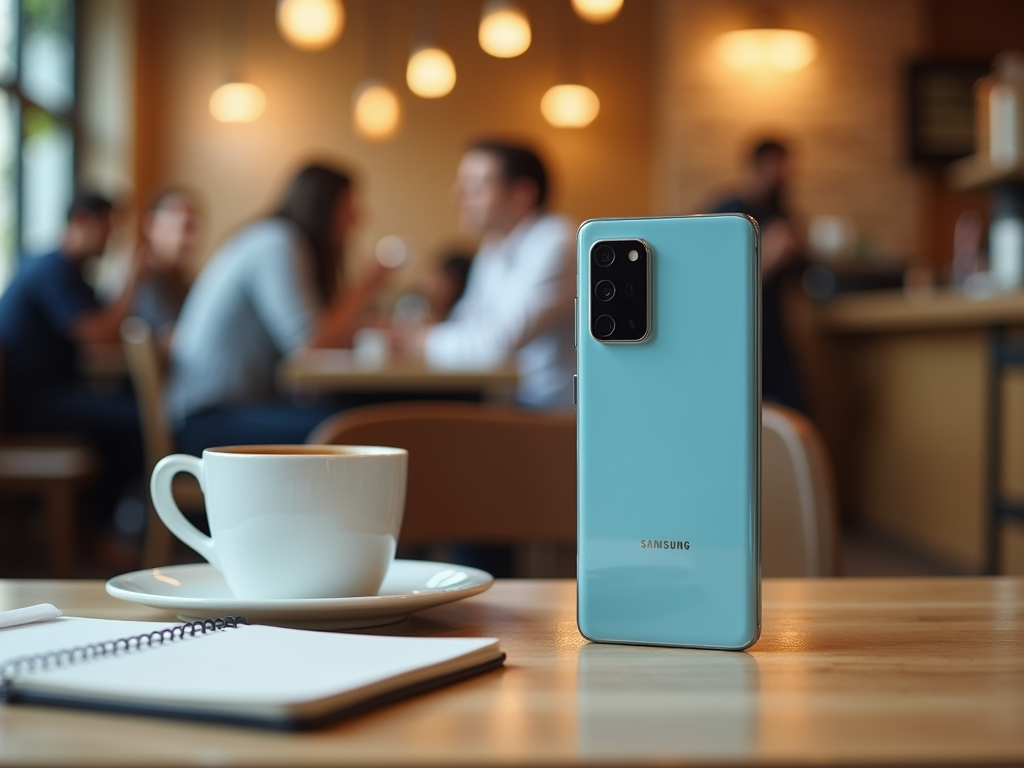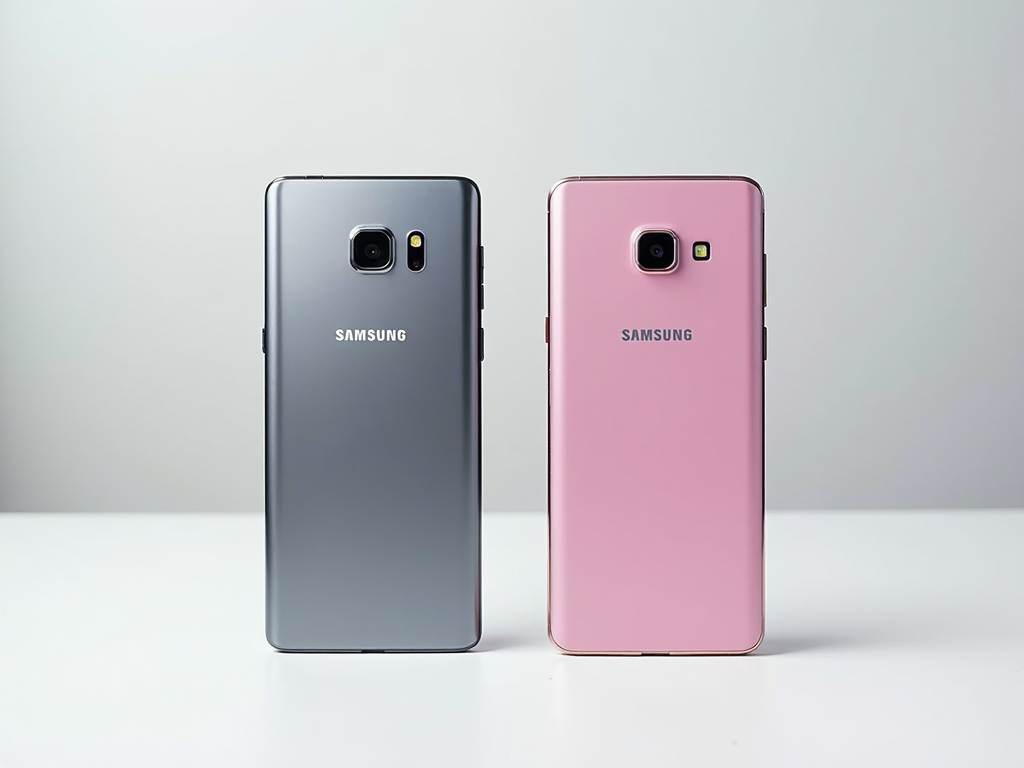The Samsung Galaxy S Series and A Series represent two distinct spectrums of Samsung’s smartphone offerings. The S Series is typically positioned as the company’s flagship line, showcasing cutting-edge technology, premium materials, and high-performance features. In contrast, the A Series is geared towards the mid-range segment, offering a balance between functionality and affordability. In this article, we will explore various aspects of both series—design, performance, camera quality, battery life, and price—to understand how they compare and which series may be the right choice for different users.
Design and Build Quality

The design and build quality of a smartphone often influence consumer choices. The Galaxy S Series is synonymous with premium design, often featuring glass backs, sleek edges, and high-resolution displays. For instance, devices like the Galaxy S23 are often equipped with Dynamic AMOLED screens that provide vibrant colors and exceptional brightness. Additionally, the S Series typically includes water and dust resistance (IP68 rating), enhancing the durability of the devices.
On the other hand, the Galaxy A Series opts for a more plastic-oriented design to keep costs down. Although recent A Series models such as the A54 have adopted a more premium look, they generally don’t match the luxurious feel of the S Series. The A Series offers a solid build quality but lacks some of the high-end features found in the S Series, like advanced materials and premium finishes. Here’s a quick comparison:
- Galaxy S Series: Glass finish, IP68 water and dust resistance, premium feel.
- Galaxy A Series: Plastic finish, adequate build quality, less premium aesthetics.
Performance

When it comes to performance, the difference between the two series is stark. The Galaxy S Series is powered by the latest high-end processors—often featuring Qualcomm’s Snapdragon or Samsung’s Exynos chips—ensuring quick response times and superior multitasking capabilities. This means that activities such as gaming and heavy multitasking perform seamlessly on S Series devices. Additionally, the S Series usually offers more RAM options, allowing for enhanced performance under load.
The A Series, while competent and powered by mid-range processors, does not match the processing prowess of the S Series. Models like the Galaxy A34 are designed for everyday tasks such as browsing, social media, and light gaming. While they are perfectly adequate for most users, performance may lag behind the flagship models, especially in multitasking or resource-intensive applications. In summary:
- Galaxy S Series: High-end processors, exceptional performance, more RAM options.
- Galaxy A Series: Mid-range processors, suitable for daily use, less intensive tasks.
The camera technology in the Galaxy S Series stands out for its advanced capabilities. Flagship models feature superior sensor technology, enhanced optical zoom, and various computational photography features that elevate image quality in various lighting conditions. The S Series cameras are often equipped with multiple lenses, including ultra-wide, telephoto, and macro, providing users with a versatile photography experience. Additionally, advanced modes for night photography, portrait effects, and professional controls make it an ideal choice for photography enthusiasts.
In contrast, the A Series offers decent cameras suitable for casual photography. While recent A Series models come with multiple lenses and can capture great images, they often lack the advanced features found in the S Series. The image processing and low-light performance may not match the flagship devices, but they can deliver satisfactory results for everyday use and social media sharing. Here’s a quick encapsulation:
- Galaxy S Series: Advanced camera features, superior low-light performance, multiple lenses.
- Galaxy A Series: Decent camera quality, suitable for casual use, fewer advanced features.
Battery Life
Battery life is a crucial factor for many users when choosing a smartphone. The Galaxy S Series offers larger battery capacities, optimized with power-efficient technology that ensures longer usage times. Features like adaptive battery and high-speed charging capabilities are typically included, allowing users to enjoy extensive usage without worrying about running out of power quickly. The latest models often include wireless charging and reverse wireless charging, catering to a wired-free lifestyle.
The A Series, while it also offers respectable battery capacity, generally does not compete with the flagship S Series in longevity and charging features. Recent models like the A24 have improved battery life thanks to their efficient software and hardware pairing, but they may not have all the high-end features like fast and reverse charging. Here’s a comparison:
- Galaxy S Series: Larger battery capacity, advanced charging options, longer usage times.
- Galaxy A Series: Good battery life, satisfactory for most users, simpler charging capabilities.
Price and Value
Pricing is often the deciding factor for many consumers, and this is where the A Series shines. Galaxy A Series phones are generally priced lower, making them accessible options for those on a budget or looking for value without compromising essential features. Samsung frequently updates the A Series, ensuring that even mid-range phones offer competitive specifications for day-to-day tasks.
On the flip side, the S Series, being the flagship line, comes with a premium price tag. While the cost can be justified by the advanced features and technologies offered, it might not be suitable for all budgets. Users looking for top-tier performance will find the investment worthwhile, whereas budget-conscious consumers may lean toward the A Series for daily use without the extra frills. Summarized:
- Galaxy S Series: Premium pricing, high-end features, justified cost for performance seekers.
- Galaxy A Series: Affordable options, great value for money, suitable for most consumers.
Conclusion
In conclusion, the Samsung Galaxy S Series and A Series cater to different users with distinct needs and budgets. The S Series, with its premium design, superior performance, and advanced camera technology, is ideal for enthusiasts and professionals seeking the best Samsung has to offer. Conversely, the A Series provides a more affordable yet capable alternative, perfect for users who need a reliable smartphone for everyday tasks without breaking the bank. When weighing your options, consider your specific needs—whether it’s performance, camera quality, or price—to choose the series that best aligns with your lifestyle.
Frequently Asked Questions
1. What is the main difference between the Galaxy S and A Series?
The main difference lies in their positioning; the Galaxy S Series is Samsung’s flagship line with premium features, whereas the A Series targets the mid-range market with more budget-friendly options.
2. Do the Galaxy A series phones have a good camera?
Yes, recent A Series models feature decent cameras suitable for everyday photography, though they lack some advanced capabilities compared to the S Series.
3. Is the battery life better on the Galaxy S Series?
Generally, yes, the S Series tends to offer larger batteries and advanced optimization features, leading to longer usage times compared to A Series devices.
4. Are Galaxy A Series phones worth buying?
Absolutely! The A Series offers great value for money, making it a suitable choice for budget-conscious consumers or those who do not need high-end features.
5. Can I play games on the Galaxy A Series?
Yes, while the A Series is equipped with mid-range processors suited for everyday tasks, many models can handle light to moderate gaming without significant issues.



